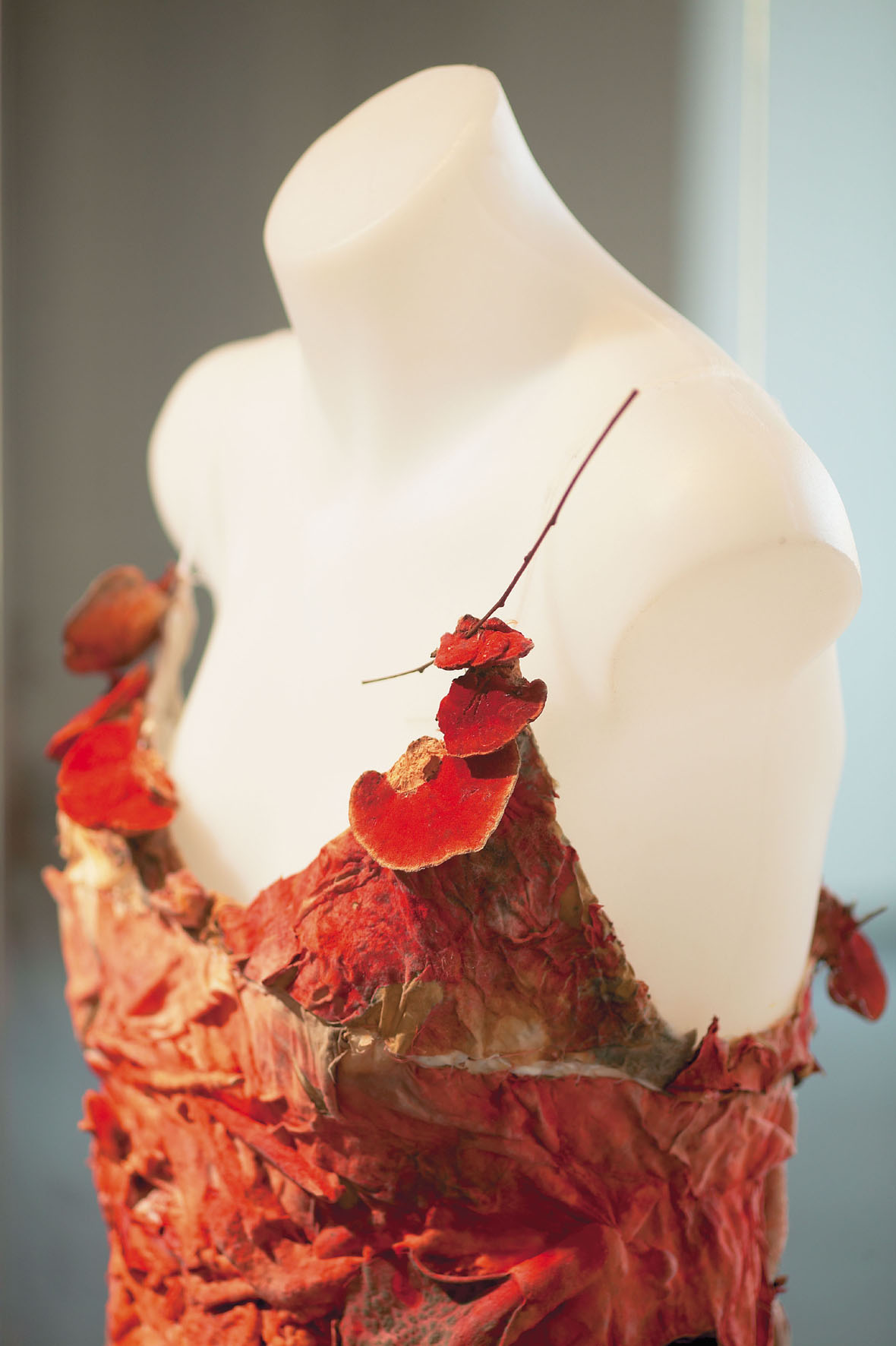 from: http://www.symbiotica.uwa.edu.au/research
from: http://www.symbiotica.uwa.edu.au/research
"SymbioticA is a research facility dedicated to artistic inquiry into new knowledge and technology with a strong interest in the life sciences. SymbioticA has resident researchers and students undertaking projects that explore and develop the links between the arts and a range of research areas such as neuroscience, plant biology, anatomy and human biology, tissue engineering, physics, bio-engineering, museology, anthropology, molecular biology, microscopy, animal welfare and ethics.
Having access to scientific laboratories and tools, SymbioticA is in a unique position to offer these resources for artistic research. Therefore, SymbioticA encourages and favours research projects that involve hands on development of technical skills and the use of scientific tools.
The research in SymbioticA is speculative in nature. SymbioticA strives to support non utilitarian, curiosity based, and philosophically motivated research.
In broad term the research ranges from identifying and developing new materials and subjects for artistic manipulation, researching strategies and implications of presenting living art in different contexts, and developing technologies and protocols as artistic tool kits. Some of the projects in SymbioticA are also very relevant to scientific research and the complexity of art and science collaborations is intensively explored.
 Areas of continued research
Areas of continued research
• Art and Biology
In broad terms the main focus of research in SymbioticA is to do with the interaction between the life science, biotechnology, society and the arts. As an area of growing interest, SymbioticA is well positioned as one of the major international centres researching and developing art and biology projects. Beside the support for hands on art and biology projects, SymbioticA has already hosted philosophers, anthropologists and social scientists for short and long term research projects into art and biology.
• Art and Agriculture/ Art and Ecology
As a subset of art and biology and through the strong connections with the Faculty of Agriculture and natural Sciences, SymbioticA is interested in research in the somewhat contradictory areas of agriculture and ecology.
• Bioethics
As part of the engagement with debate over the implications of developments in the life sciences with culture and society; SymbioticA encourage research into the ethics of manipulating living systems for utilitarian, speculative and seemingly frivolous ends. Art can act as an important catalyst for ethical exploration. In addition some of the research in SymbioticA attempts to approach bioethics form a secular non-anthropocentric perspective.
• Neuroscience
SymbioticA has a long involvement with neuroscience as it is one of the main research areas of SymbioticA’s scientific director Prof. Stuart Bunt. Projects that deal with neuroscience and robotics are of particular interest. See www.fishandchips.uwa.edu.au
• Tissue Engineering
SymbioticA have built a reputation as the leading laboratory that investigates the in vitro growth and manipulation of living tissue in three dimensions. The work of The Tissue Culture & Art Project, and many other subsequent projects, guided the developments of protocols and specific techniques of tissue engineering.
• Bioreactor
The development of a life sustaining device for tissue engineered art is an area of investigation that requires expertise in diverse knowledge pools from biology, through engineering and fluid dynamics to art and display strategies. Artists in SymbioticA and scientists from the School of Anatomy and Human Biology have been researching the development of an “artistic” bioreactor for the last five years.
History_________________________________________________________________
SymbioticA was established in 2000 by cell biologist Professor Miranda Grounds, neuroscientist Professor Stuart Bunt and artist Oron Catts. Oron Catts and Ionat Zurr from the Tissue Culture and Art Project (TC&A) had been working as artists/researchers in residence in the School of Anatomy and Human Biology and the Lions Eye Institute since 1996. The shared vision of Grounds, Bunt and Catts for a permanent space for artists to engage with science in various capacities led to the building of the artists’ studio/lab on the second floor of the School of Anatomy and Human Biology at The University of Western Australia.
Funding for the space was provided by the Lotteries Foundation of WA and The University of Western Australia
School of Anatomy and Human Biology and History with Artists______
The School of Anatomy and Human Biology has a long tradition of working with artists, with the departmental corridors lined with art and scientific images. Hans Arkeveld, sculptor and painter, has been working with the department for the last three decades. Other artists have come and gone on an ad hoc basis, but although many observed and gained inspiration there, it was not until Catts and Zurr entered the laboratories and used the tools of scientific research to produce their art work that the potential of a space such as SymbioticA was conceived.
Winners of the 2007 inaugural Golden Nica for Hybrid Arts in the Prix Ars Electronica
SymbioticA is an artistic laboratory dedicated to the research, learning and critique of life sciences. SymbioticA is the first research laboratory of its kind, in that it enables artists to engage in wet biology practices in a biological science department.
SymbioticA sets out to provide a situation where interdisciplinary research and other knowledge and concept generating activities can take place. It provides an opportunity for researchers to pursue curiosity-based explorations free of the demands and constraints associated with the current culture of scientific research while still complying with regulations. SymbioticA also offers a new means of artistic inquiry, one in which artists actively use the tools and technologies of science, not just to comment about them, but also to explore their possibilities.




No comments:
Post a Comment